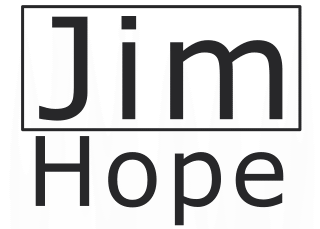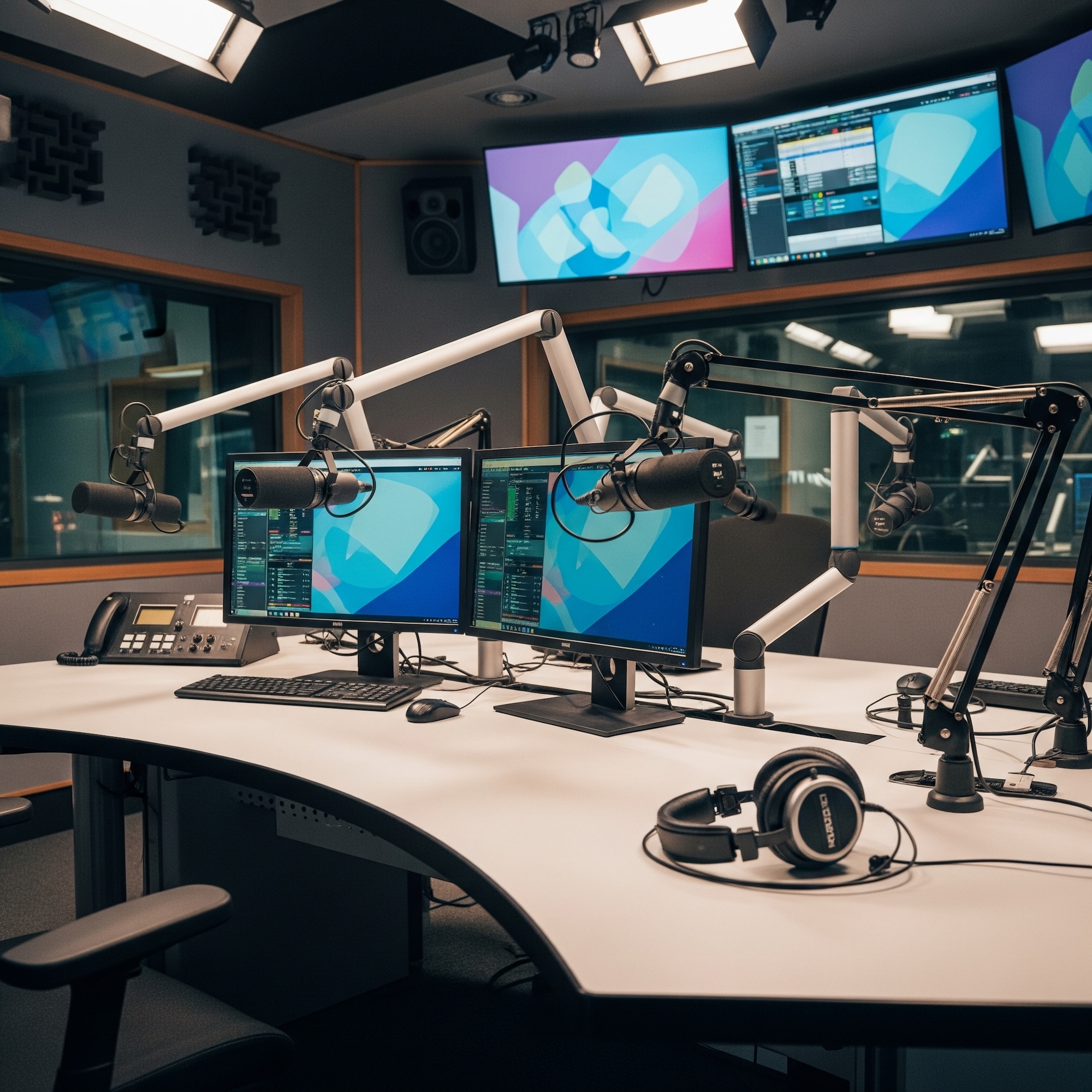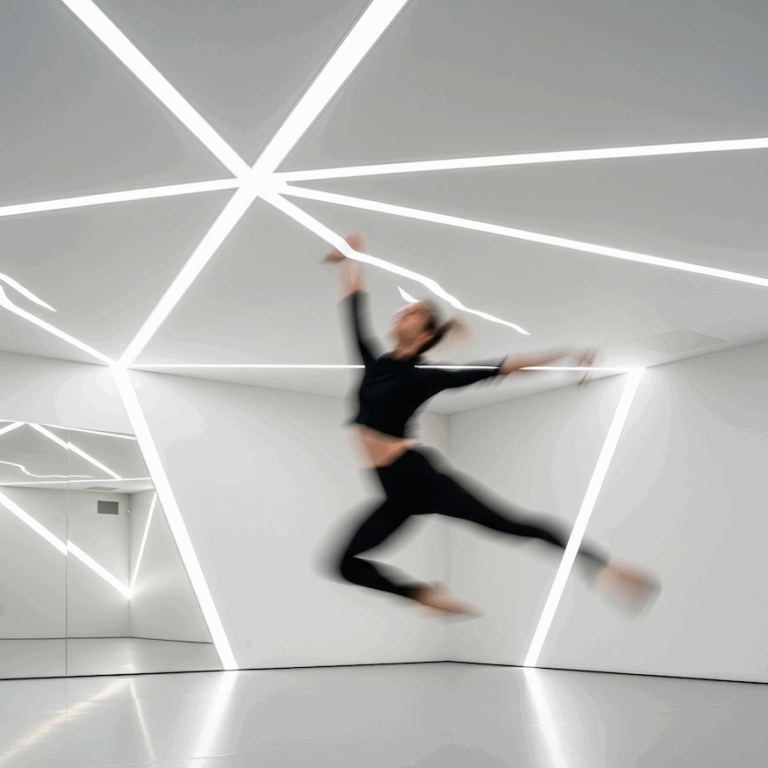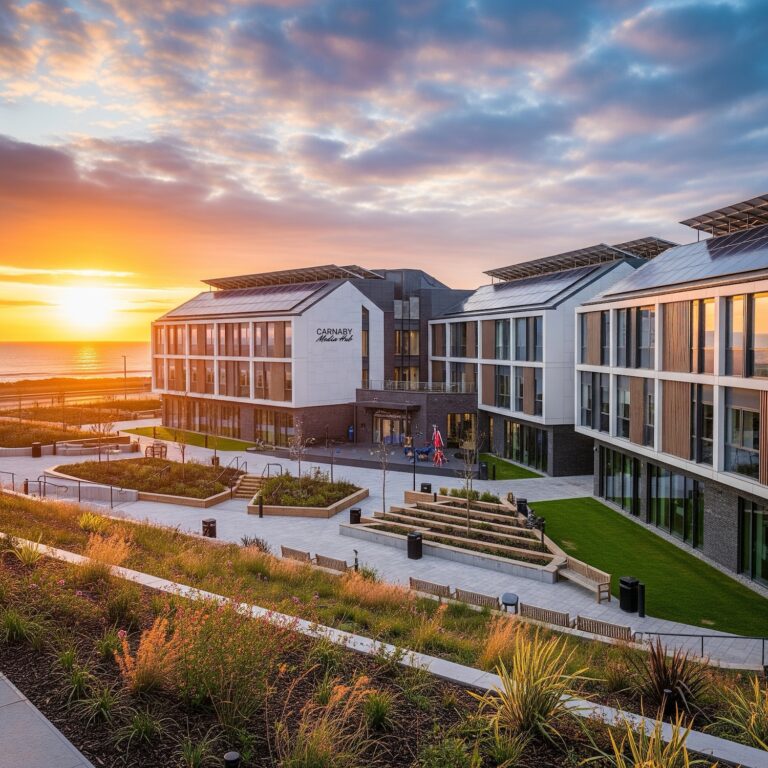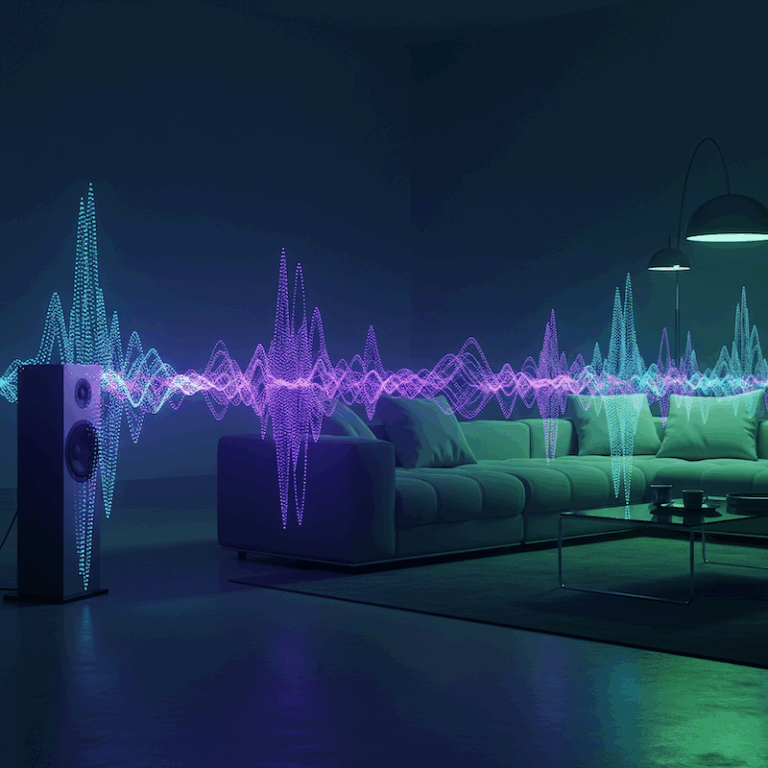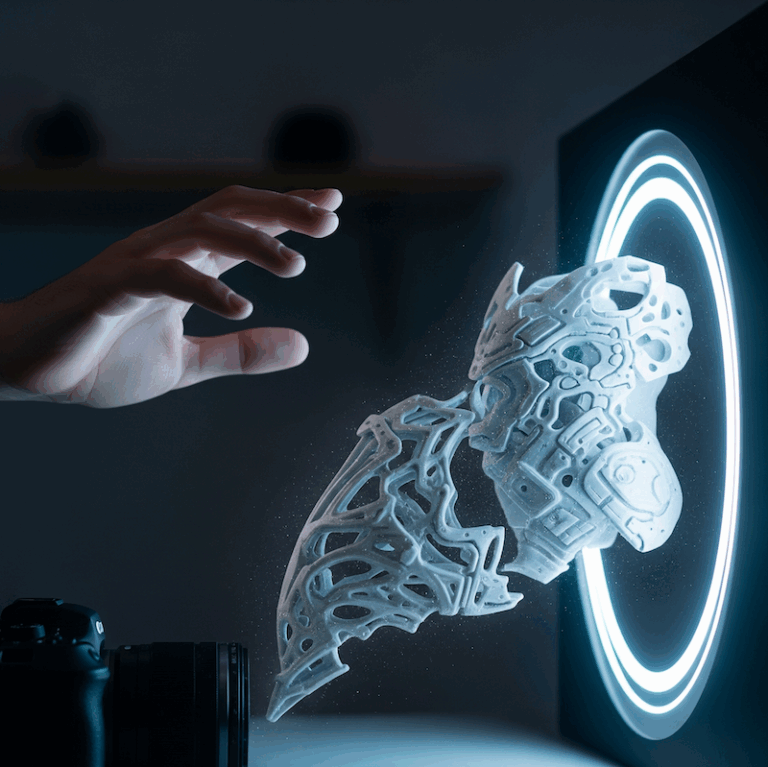On Air and Online: Diving into the Carnaby Media Hub’s Radio Studios
In an age utterly captivated by the visual spectacle – where screens dominate our lives and cinematic worlds unfold with breathtaking realism – it’s remarkably easy to overlook the enduring, foundational power of sound. Yet, long before moving pictures danced across a silver screen, the human voice, expertly captured and broadcast, held audiences spellbound. The magic of audio content, whether it’s the comforting cadence of a familiar radio host, the gripping narrative of a true-crime podcast, or the live, unscripted energy of an online stream, continues to hold an almost mystical sway over our imaginations. It’s an intimate, personal connection, painting vivid pictures directly within the theatre of the mind, often while we’re busy driving, cooking, or simply unwinding after a long day. This invisible, yet profoundly impactful, realm of sound remains utterly paramount in the diverse landscape of modern media.
Stepping beyond the colossal dimensions of our Sound Stages, we now invite you to explore a different, equally vital facet of the Carnaby Media Hub: its meticulously designed and cutting-edge Radio Studios. These aren’t your dusty, old-school broadcast booths of yesteryear, smelling vaguely of stale coffee and forgotten jingles; oh no, these are envisioned as incredibly versatile hubs, dynamically crafted to serve the full, vibrant spectrum of today’s audio creators. From the structured precision of traditional terrestrial radio broadcasts, delivering news and music to the masses, to the explosive creativity of independent podcasting and the immediate, global reach of live audio streaming, these studios are designed to be utterly seamless, utterly professional, and utterly inspiring.
In the grand, theoretical blueprint of the CMH, these radio studios aren’t just an afterthought or a side-project. Instead, they stand as gleaming, state-of-the-art facilities, each one a testament to our commitment to providing unparalleled infrastructure for every form of media. They are meticulously designed not only to capture crystal-clear audio with effortless grace but also to integrate seamlessly with the digital demands of modern distribution. These are the spaces where compelling stories are told, where debates ignite, where music finds its voice, and where conversations resonate, connecting voices to listeners across the globe with precision, passion, and a healthy dose of sonic sparkle. They are, in essence, the vibrant, beating heart of audible creation within the Carnaby Media Hub.
Acoustic Design for Pristine Audio: The Symphony of Silence, Refined
In the bustling, vibrant world of media production, where grand cinematic narratives unfold on colossal sound stages, one might assume that the ultimate acoustic challenge lies in those vast, cavernous spaces. However, the seemingly more intimate realm of a radio studio, particularly one designed for the nuanced capture of human voice, delicate musical performances, and subtle soundscapes, presents an even more exquisite and demanding acoustic puzzle. Here, every whisper, every nuanced inflection, every quiet breath, and every subtle layer of audio content must be captured in absolute, unadulterated purity. There’s no grand visual spectacle to distract from an unwanted hum or a rogue echo; in the deeply personal and immediate world of audio, every sonic imperfection stands out like a neon sign in a quiet library. For the theoretical CMH’s radio studios, therefore, acoustic design isn’t just important; it’s the very bedrock upon which pristine audio clarity is built – the invisible, silent force that ensures voices truly sing, unmarred by external distractions or internal sonic clutter.
Now, those of you who joined us for our previous exploration into the Carnaby Media Hub’s vast sound stages will recall our enthusiastic deep dive into the fundamental principles of acoustic mastery. And you’d be absolutely correct to note that many of the core engineering techniques applied to those grand spaces are, indeed, the very same sophisticated methods employed in our radio studios. We are, after all, building sanctuaries of silence across the entire hub! So, rather than re-tuning our microphones and repeating every glorious detail of concepts like “box-in-a-box” construction, the meticulous layering of multi-density soundproofing materials in our walls, the ingenious function of floating floors to decouple structures from intrusive vibrations, or the airtight integrity of our acoustic sound locks(those delightful vestibules designed to keep noise out even during a quick dash for a coffee), we encourage you to revisit The Heart of Creation: Exploring the Carnaby Media Hub’s Sound Stages for a comprehensive and utterly fascinating breakdown of those foundational principles. Think of it as the ultimate prequel to our current sonic adventure!
However, while the techniques for achieving silence are remarkably similar, the precision required for a radio studio elevates the game to a whole new level. Our radio booths aren’t just quiet; they are designed for an almost profound quietude, a truly ultra-low noise floor that needs to be virtually imperceptible to the human ear, let alone the exquisitely sensitive microphones often used in broadcast. We’re talking about aiming for Noise Criterion (NC) ratings that push the very limits of measurement, ensuring an environment so hushed you could practically hear a butterfly land (and then, with the right mic, record it!). This extreme quiet is paramount because voice work, nuanced interviews, and delicate sound design simply cannot tolerate even the faintest background hum or an insidious air conditioning whisper. These subtle sonic pollutions, easily masked by the loud explosions of a cinematic scene, would utterly devastate the intimacy and clarity required for a compelling podcast or a live radio broadcast.
Within this supremely quiet shell, the internal acoustic treatment is similarly tailored for the unique demands of the spoken word and music. While the balance between absorption (soaking up sound to control reverb) and diffusion(scattering sound to maintain a natural, lively feel) remains crucial, the specific application within these smaller, more intimate spaces is finely tuned. The goal is to achieve an optimal balance that ensures vocal clarity, articulation, and presence, preventing any unwanted muddiness or harsh reflections, without creating an unnaturally “dead” sound that can be uncomfortable for talent and fatiguing for engineers. It’s about crafting a room that sounds “right”—clean, vibrant, and utterly transparent to the audio being created within it. Even the HVAC systems, which we’ve lauded for their silent operation in the larger stages, are here designed with an even more fanatical dedication to quietude, ensuring that the air conditioning itself doesn’t contribute a single, unwelcome decibel to the pristine soundscape.
Ultimately, the acoustic design of the Carnaby Media Hub’s radio studios represents a masterclass in controlled environments. It’s about building a sonic cocoon where creators can focus entirely on their craft, confident that every single nuance of their audio will be captured with breathtaking fidelity, free from the cacophony of the outside world or the unruly reflections of the room itself. It’s where the purity of sound truly reigns supreme.
Cutting-Edge Broadcast Technology: The Brains Behind the Broadcast, and Beyond
Once the pristine silence of a Carnaby Media Hub radio studio is achieved, the next crucial step is to populate it with the very best instruments for sonic alchemy. These aren’t just rooms with microphones; they are sophisticated command centers, meticulously equipped with cutting-edge broadcast technology designed to capture, shape, and deliver audio with unparalleled clarity and control. Think of it as the brain and nervous system of the entire broadcast operation, working in seamless harmony to bring creative visions to life, whether they’re destined for traditional airwaves or the boundless digital ocean.
At the very heart of each radio studio would sit the majestic digital audio console. Forget the bewildering tangle of knobs and faders from yesteryear’s analog beasts; these are sleek, ergonomic control surfaces, often with touch-screen interfaces, representing a paradigm shift in audio mixing. We’re talking about systems from industry titans like DHD, Lawo, or Axia, all champions of AoIP (Audio over IP) technology. These aren’t just mixers; they’re powerful digital signal processors (DSPs) with immense routing capabilities, allowing engineers to effortlessly manage dozens, even hundreds, of audio sources simultaneously. Imagine a conductor guiding a vast orchestra, but instead of a baton, they wield a hyper-responsive digital interface, precisely sculpting every sound with fingertip control. These consoles would be the central command point, offering intuitive control over microphone levels, music playback, sound effects, external feeds, and communication channels, all with a crystal-clear digital signal path that eliminates noise and distortion. It’s like having a sonic chameleon at your command, ready to adapt to any broadcast scenario with graceful precision.
The journey of sound, of course, begins with the capture, and for that, nothing less than high-quality microphoneswould suffice. The Carnaby Media Hub’s radio studios would feature a curated selection of industry-standard workhorses and specialized gems. We’re talking about the legendary warmth of a Neumann for those intimate, resonant voices, the rugged reliability of a Shure SM7B for dynamic, punchy broadcasts, or the clear articulation of an Electro-Voice RE20 – all mounted on sturdy, adjustable boom arms that allow for effortless positioning and pristine pickup. Each microphone would be paired with equally high-fidelity pre-amplifiers to boost the delicate signal without introducing unwanted noise, ensuring that the very first stage of the audio chain is utterly pristine. Beyond the raw capture, sophisticated digital audio processing would be applied in real-time, right there in the console. This includes precise equalization to shape vocal tones, dynamic compression to manage volume levels for consistent broadcast, and noise gates to eliminate any unwanted ambient sounds, even those too subtle for the human ear. It’s about polishing every sound until it gleams, ready for its public debut.
But the true genius of the Carnaby Media Hub’s integrated design shines through in its seamless ability to simulcast events from across the entire complex. Imagine a thrilling live performance unfolding in the central theatre, or a compelling panel discussion happening in a conference room. Thanks to the overarching Dante network, which serves as the hub’s ubiquitous audio superhighway, the pristine audio from that live event can be instantly, effortlessly routed into any of our broadcast studios. This means that while a live audience might be experiencing the event in person, the Carnaby Media Hub simultaneously opens up that experience to a global audience across a dizzying array of platforms. That very same performance could be simultaneously broadcast live to traditional television networks, streamed to popular online video platforms, transmitted over DAB (Digital Audio Broadcasting) radio, piped directly into countless smart speakers, and made available globally via Internet Radio. This revolutionary capability ensures that audiences can enjoy performances, discussions, or any content generated within CMH in the way that best suits them, whether they’re at home on their couch, listening in the car, or just asking their smart device to play it. It’s about democratizing access to content and maximizing its reach, transforming every event into a truly multi-platform phenomenon.
Beyond these ambitious simulcasting capabilities, a broadcast, whether live or recorded, is far more than just a voice. It’s a tapestry woven with music, jingles, sound effects, and seamless transitions. To manage this intricate dance, CMH’s studios would be fully integrated with state-of-the-art playout software. These powerful systems are the digital backbone of the station, allowing producers to schedule music playlists, trigger pre-recorded segments, launch advertisements with pinpoint accuracy, and ensure every element of the broadcast unfolds on cue, like a perfectly choreographed ballet. Complementing this, dedicated jingle players and sound effect libraries, easily accessible via hotkeys or touchscreens, would provide instant access to the myriad sonic snippets that give a broadcast its character and professional polish.
And what good is a studio if you can’t talk to the outside world, or even the person in the next room? Communication systems, often referred to as talkback, are the unsung heroes of broadcast coordination. CMH’s studios would featurerobust talkback networks, allowing the presenter in the booth to communicate effortlessly with the producer in the control room, or with remote guests patched in from across the globe. Clear, instantaneous communication ensures that cues are never missed, transitions are smooth, and the entire team remains in lockstep, even when separated by soundproofed glass. It’s the invisible conversation that keeps the entire broadcast machine purring harmoniously.
In essence, the cutting-edge broadcast technology within the Carnaby Media Hub’s radio studios isn’t about complexity for complexity’s sake. It’s about leveraging the finest digital tools to provide unparalleled control, flexibility, and sonic purity, ensuring that every piece of audio content created within these walls is delivered to its audience with professional polish and captivating clarity, ready to inform, entertain, and inspire. It’s where the art of sound meets the precision of engineering, forging the future of audible media and broadcasting it far and wide.
Versatility for Modern Audio Content: The Multi-Talented Maestro of the Airwaves
In the ever-evolving symphony of modern media, where content consumption habits shift faster than a DJ’s BPM, dedicated, single-purpose spaces are, frankly, a relic of a bygone era. At the Carnaby Media Hub, our philosophy is rooted firmly in dynamic adaptability. Our radio studios, therefore, are not simply “radio studios” in the traditional, singular sense; they are meticulously designed as multi-purpose sonic chameleons, each one a versatile maestro capable of conducting a vast array of audio-driven productions with effortless grace. This inherent flexibility is a cornerstone of the CMH ethos, ensuring that every square foot is optimized for diverse creative endeavors, maximizing efficiency and enabling creators to pivot seamlessly between different formats without ever needing to change their postcode.
Imagine a single studio, transforming its identity throughout the day with fluid ease. In the morning, it might hum with the controlled chaos of a live terrestrial radio show, broadcasting news, witty banter, and chart-topping hits to the airwaves. By afternoon, the very same space could transition into a serene, focused environment for recording a serialized podcast, capturing every nuanced word and subtle sound effect in pristine isolation. Later, it might become the vibrant nexus for a live audio stream, connecting directly with an online audience for an interactive Q&A session or a compelling discussion. This inherent flexibility means that creators can, quite literally, produce a live radio program, record a podcast, and then conduct an online streaming event, all within the comfortable and technically equipped confines of the very same studio, often within the same day or even as part of a continuous, evolving program. It’s about providing the ultimate creative playground where the studio adapts to the artist, not the other way around.
Adding another layer to this versatility is the seamless integration of remote guest and interview capabilities. In a world that often demands global collaboration, our studios are specifically equipped to effortlessly bring in participants from across continents. Whether it’s a high-profile interview with an expert joining via a dedicated IP line, or a panel discussion featuring contributors patched in from their home studios, the Carnaby Media Hub radio studios ensure crystal-clear audio quality for all parties, making remote participation as fluid and engaging as if everyone were sitting in the same room. This capability vastly expands the scope and reach of any production, transcending geographical limitations with an elegant digital handshake.
But here’s where the Carnaby Media Hub truly distinguishes itself, elevating the very concept of “radio” into a richer, more engaging experience: Visual Radio, as a standard, cutting-edge feature in every single studio. This isn’t an optional add-on; it’s a core USP of CMH, recognizing that today’s audio content is increasingly consumed on platforms where a visual element, even a subtle one, can dramatically enhance engagement. The concept of “visual radio” means adding a dynamic, broadcast-quality visual layer to audio-first content, transforming a purely auditory experience into a captivating multimedia presentation, perfect for live streaming to platforms like YouTube, Twitch, or even dedicated broadcast channels.
To achieve this, each CMH radio studio would feature strategically integrated smaller LED walls. These aren’t the colossal, immersive LED Volumes of our dedicated virtual production stage, but rather compact, high-resolution screens typically positioned behind the talent. Their purpose is ingenious: they provide dynamic backgrounds, display custom branding, showcase subtle animations, or even offer real-time graphics and social media feeds, adding significant visual appeal and context to programs that go down the visual radio route. Imagine a podcast with a constantly changing, thematically relevant background, or a live radio show where the listener can also see the hosts’ expressions or a dynamic graphic representing the song playing. These visual elements dramatically enhance viewer engagement without distracting from the primary audio content.
Powering this visual prowess would be the robust and remarkably user-friendly Blackmagic Design ecosystem. Compact, high-quality Blackmagic cameras would be strategically placed within the studio, offering multiple angles of the talent and guests. These camera feeds would then flow directly into intuitive Blackmagic ATEM production switchers, allowing for seamless, real-time cuts, transitions, and the incorporation of lower thirds, graphics, and even picture-in-picture effects – all managed by a single operator, often the audio engineer or producer themselves, with surprising ease. This setup delivers broadcast-quality visual output with a lean crew footprint, democratizing access to professional-grade visual storytelling for audio creators. And true to CMH’s integrated philosophy, this visual radio feed, once produced, isn’t confined to the studio; it’s immediately available throughout the entire complex via the high-speed network, ready for simulcasting across any platform, anywhere in the world. This means that a visual podcast created in one of our radio studios could easily be routed to a larger streaming platform, or even integrated into a broader broadcast production originating elsewhere in the hub.
In essence, the inherent versatility of the Carnaby Media Hub’s radio studios, crowned by their standard-setting Visual Radio capabilities, positions them as unparalleled spaces for modern audio content creation. They are environments where traditional broadcasting meets digital innovation, where every voice finds its platform, and where creativity is truly unbound, delivered to audiences in a richer, more engaging format than ever before.
Connectivity & Workflow: The Invisible Superhighways of Sound
A radio studio, no matter how acoustically perfect or technologically advanced, would be little more than a very expensive, very quiet room without the invisible arteries and neural pathways that connect it to the wider world – and indeed, to the entire Carnaby Media Hub ecosystem. This is where connectivity and workflow truly shine, acting as the invisible glue that binds every microphone, console, and screen into a cohesive, supremely efficient production machine. It’s about ensuring that talent can focus on their performance, and engineers can focus on their craft, without ever having to wrestle with a tangled mess of cables or a frustrating digital bottleneck.
At the heart of the Carnaby Media Hub, as we briefly hinted in our discussion of general power and infrastructure, lies a high-speed fiber optic backbone. This isn’t just a fancy phrase; it’s the very foundation of the hub’s operational philosophy. Each radio studio is not an isolated island but a fully integrated, highly sophisticated node on this vast, low-latency network. This seamless integration means immediate access to every resource available across the entire complex. Think of it as a central library of audio, video, and data, instantly accessible from any connected point. This level of pervasive connectivity brings unparalleled benefits: rapid resource sharing, centralized content management, effortless scalability for future needs, and an inherent future-proofing against rapidly evolving media standards. It’s like having a universal plug-and-play system for all your creative ambitions, making complex routing tasks surprisingly simple.
Building upon this robust foundation is the omnipresent power of IP-based audio routing, with Dante leading the charge. For our radio studios, this means a liberation from the restrictive, cumbersome world of traditional analog cabling. Instead, every audio source – be it a microphone in a vocal booth, a playback device from a remote server, a live feed from another CMH venue (like that thrilling theatre performance we just discussed!), or a remote guest joining the conversation – becomes a digital stream on the network. This provides an almost dizzying level of flexibility: an engineer can route any source to any destination (a console fader, a recording device, a broadcast output, a headphone mix) with just a few clicks of a mouse or taps on a screen. This radically simplifies setup and tear-down, dramatically reduces potential points of failure (fewer physical cables to trip over, for one!), and ensures a pristine, entirely digital signal quality from input to output, free from the hums and buzzes that plagued older systems. And for our visionary Visual Radio setups, this IP-based system ensures that audio and video streams remain in perfect, frame-accurate sync, traveling together across the network as a harmonious, integrated package, ready for simulcasting to any platform. It’s a beautifully choreographed digital dance where every step is perfectly timed.
Beyond the invisible highways of data, the physical layout of the radio studios is meticulously designed to foster efficient and collaborative workflows. Each main studio would feature its own dedicated control room, often separated by a large, acoustically isolated viewing window. This control room is the nerve center of the operation, where the audio engineer and producer become the masters of the broadcast universe. Here, the main digital audio console takes pride of place, surrounded by multiple monitors displaying everything from playout software and communication systems to the live visual feed for visual radio productions. The ergonomic design of these control rooms ensures that every control is within easy reach, every display is clearly visible, and the sightlines into the main studio are crystal clear, allowing for seamless communication and non-verbal cues between talent and crew.
In larger setups, or for specific workflow needs, a separate producer booth or even a dedicated vocal booth might complement the main studio. These are carefully isolated spaces where producers can comfortably monitor the broadcast, communicate discreetly with talent without their voices being picked up by live microphones, or where remote guests might be set up for interviews, ensuring their audio is captured perfectly without interfering with the main studio’s acoustics. This precise spatial arrangement ensures that multiple activities can occur simultaneously without acoustic bleed, allowing for complex productions to unfold with remarkable smoothness.
Ultimately, this seamless connectivity and thoughtfully designed spatial workflow streamline the entire production process within the Carnaby Media Hub’s radio studios. From the initial recording of a raw voice to its final broadcast or stream to millions, complex tasks are transformed into surprisingly fluid operations. It’s about creating an environment where technology serves creativity, not the other way around, allowing voices to be heard, stories to be shared, and connections to be forged, all with effortless digital elegance.
The Sonic Soul of Innovation
As we tune out from our exploration of the Carnaby Media Hub’s radio studios, it becomes abundantly clear that these aren’t just isolated booths for broadcasting; they are vibrant, technologically sophisticated ecosystems, each one a testament to the enduring power and evolving nature of audio. From the almost magical silence meticulously engineered into their very foundations – a quietude so profound it allows every sonic nuance to shine – to the dazzling array of cutting-edge broadcast technology that fills them, these studios represent the zenith of modern sound creation environments. We’ve seen how digital audio consoles become intuitive command centers, how high-fidelity microphones capture every breath, and how the entire hub’s Dante network allows a seamless flow of sound, enabling live events from across the complex to be simultaneously broadcast to a global audience.
Crucially, the inherent multi-purpose versatility of these spaces stands as a beacon of CMH’s forward-thinking design. No longer are creators confined to a single format; within these walls, a live radio show can seamlessly transition into a deep-dive podcast recording, or transform into a dynamic live audio stream. And then there’s the truly groundbreaking standardisation of Visual Radio, which transforms audible content into a richer, more engaging multimedia experience, complete with dynamic LED backgrounds and sleek Blackmagic-powered camera work. This innovative feature, integrated into every studio, ensures that content is ready for a visual-first digital world, reaching audiences on every conceivable platform from traditional radio to smart speakers and streaming sites. Finally, the meticulous attention to connectivity and workflow, ensuring these studios are perfectly integrated into the Hub’s overall digital superhighway, means that creativity is never hampered by technical limitations, allowing for fluid productions and global collaboration.
These radio studios, therefore, are prime examples of the Carnaby Media Hub’s overarching vision: to foster diverse media forms within a unified, future-proof, and utterly state-of-the-art environment. They are places where voices find their clearest expression, where stories are woven with intricate soundscapes, and where the intimacy of audio reaches listeners in ways that suit them. They are a celebration of sound’s enduring power, meticulously crafted for the creators of today and the pioneers of tomorrow.
So, as you ponder the captivating potential of these sonic powerhouses, we’re curious: What’s your favorite podcast, and how do you imagine its creation truly benefiting from a studio like this? Would the visual element add a new dimension to its storytelling, or would the pristine audio simply make an already great listen even more immersive? We’re all ears!

